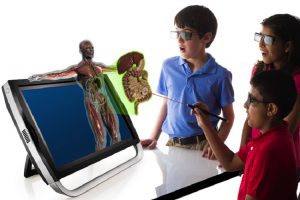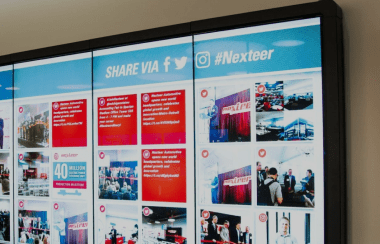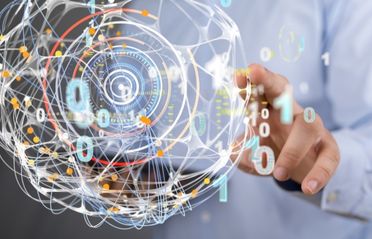As much as the world seems to pride its technological advancements and progress over the last half-century, there is more to criticize about modern education and the use of technology in it than there is to admire. If you look at the current schooling system and how institutes prioritize subjects for their students, you will notice an archaic approach that revolves around the era of industrial revolution. Math is an important subject, but why does it have to be the most important subject for everyone?
Most of what students learn today is in theoretical form, and this theory is so disconnected from the real world that when a student sees the professional world for the first time as an intern, it is always a huge surprise. If the current education system was relevant and in line with what & required of modern professionals, this would not be the case.
Issues with Modern Education
Here are some common problems with modern education that need to be addressed as soon as possible.
It Is Teacher Based
The existing education system revolves around teachers. It is not learner-centric. A professor who has a unique way of teaching math may have the highest number of students in his/her class. Who is to ask if the teaching style of that professor makes sense to everyone in that class? If a professor does not make sense to every student, then there must be an individual approach. In the times that we live in, approaching every student individually is not a far-fetched idea anymore. If a student learns better with the help of visuals, there is augmented and virtual reality to approach this student individually.
It Lacks Visuals
Researchers say that the processing power of the brain to process visuals is 60,000 times faster than its ability to process text. 0.1 seconds is enough time for the brain to make sense of a visual.
Therefore, if humans are programmed to process visual information faster, then why do we have to force students to “read” everything? This is especially true when statistics claim that on an average, a person gets distracted within 8 seconds, or, for that matter, 20% is all that people remember from reading a text without visuals.
It Does Not Address Individuality
Einstein once said that judging a fish by its ability to climb a tree, would convince the fish that it is stupid when it is not. Unfortunately, this is what’s happening in schools today? There is a class of 30 students, they all receive the same exam sheet with the same questions, and then the teacher ranks them based on their performance in that test. Eventually, the teacher fails John because he couldn’t memorize the answers to the questions on the paper. But who’s going to look past John’s inability to memorize things and into his strength of solving logical problems?
It Is Uninspiring
The problem with today’s education is that our teachers are still using old methods of teaching i.e. they deliver the lecture verbally without supporting it with visuals, interactive illustrations, etc. and that’s why modern students find the education system boring. They spend their lives with mobile devices, watching fascinating technology related videos on Youtube, learning about how AI (artificial intelligence) works on their smartphone cameras, etc. and then they are made to sit in classes with passionless lectures delivered in uninspiring ways.
It Misses the Experience
The experience &factor is completely missing from modern education. Even if it is there, only a select few students benefit from it. Experience-based learning is the best learning, and that’s been proven time and again. According to the learning styles published by David Kolb in 1984, teachers can even help students strengthen their weaker learning styles through experiential learning. McCall’s research in the 1980s proved 70% of the learning in an individual is a result of an on-the-job experience. Unfortunately, experiential learning is still missing from the modern education system for the most part.
Augmented Reality in Education
A 2010 study that compared the results of teaching using augmented reality vs. mouse and keyboard-based learning revealed that students who learned with the help of augmented reality showed considerably better academic performance than those who learned using the traditional methods.
It is essential to learn the concept of augmented reality here before going into the details of how the modern education system can benefit from it. Simply put, augmented reality is when you introduce elements of the virtual world into the real world.
Here is how augmented reality can help teachers and students in transforming the learning experience.
It Brings in Visuals
You have read how visuals can increase the speed of learning and how students can better understand concepts with the help of visuals. Take the example of Karen Schrier, from the Massachusetts Institute of Technology, who helped her students learn the details of the Battle of Lexington through a game called Reliving the Revolution. It is a game based on augmented reality that urges the students to uncover the mysteries of the Battle of Lexington by being the characters in the war.
It Does Away with Uninspiring Learning
Learning a different language can be a difficult task, more so when you are learning in a traditional and clichéd way. However, augmented reality is putting an end to the uninspiring lectures and boring styles of teaching. A great example of that is New Horizon, an augmented-reality-based English learning program for Japanese students published by Tokyo Shoseki. It takes advantage of a smartphone app that allows students to point their cameras towards the book to see English conversations between animated characters.
It Provides Experiential Learning
Experiential learning is when the students can be a part of an experience rather than being the outsider. Students from Mansel Primary School have learned what experiential learning means with the help of AR technology. They get to wander around in custom-created environments and even deal with monsters as tasks. At the end of their AR journey, they must write their experiences in their own words.
It Lets Students Learn Their Way
The Cleveland Clinic is an excellent example of how students can learn without the intervention of a teacher when they have technology at their disposal. The institute has partnered with Microsoft to use Microsoft’s holo-lens technology for letting students learn about human body using a 3D hologram. Students can spend their time looking at the 3D hologram of a human body for as long as they want and from any possible angle without a lecturer accompanying them.
To sum up the benefits of AR learning:
- It promotes experience-based learning.
- It uses visuals for faster and better learning.
- It helps students learn in a fun environment.
- It does away with the monotony of lectures.
- It makes teaching affordable by introducing virtual elements rather than arranging real objects and places for learning purposes.
- It lets students learn at their pace.
The educational institutes around the world are quickly realizing the importance of using technology in learning. Those who have understood the scope and long-term benefits of technology in education have started to implement it. There is no doubt that among other technologies, augmented reality plays a central role in revolutionizing the existing educational system. If such technologies could become a standard in learning around the world, the future that has only been depicted in sci-fi movies is not too far.
Sources

Product Engineering Services Customized software development services for diverse domains
Quality Assurance End-to-end quality assurance and testing services
Managed Services Achieve scalability, operational efficiency and business continuity
Technology Consulting & Architecture Leverage the extensive knowledge of our Domain Experts




